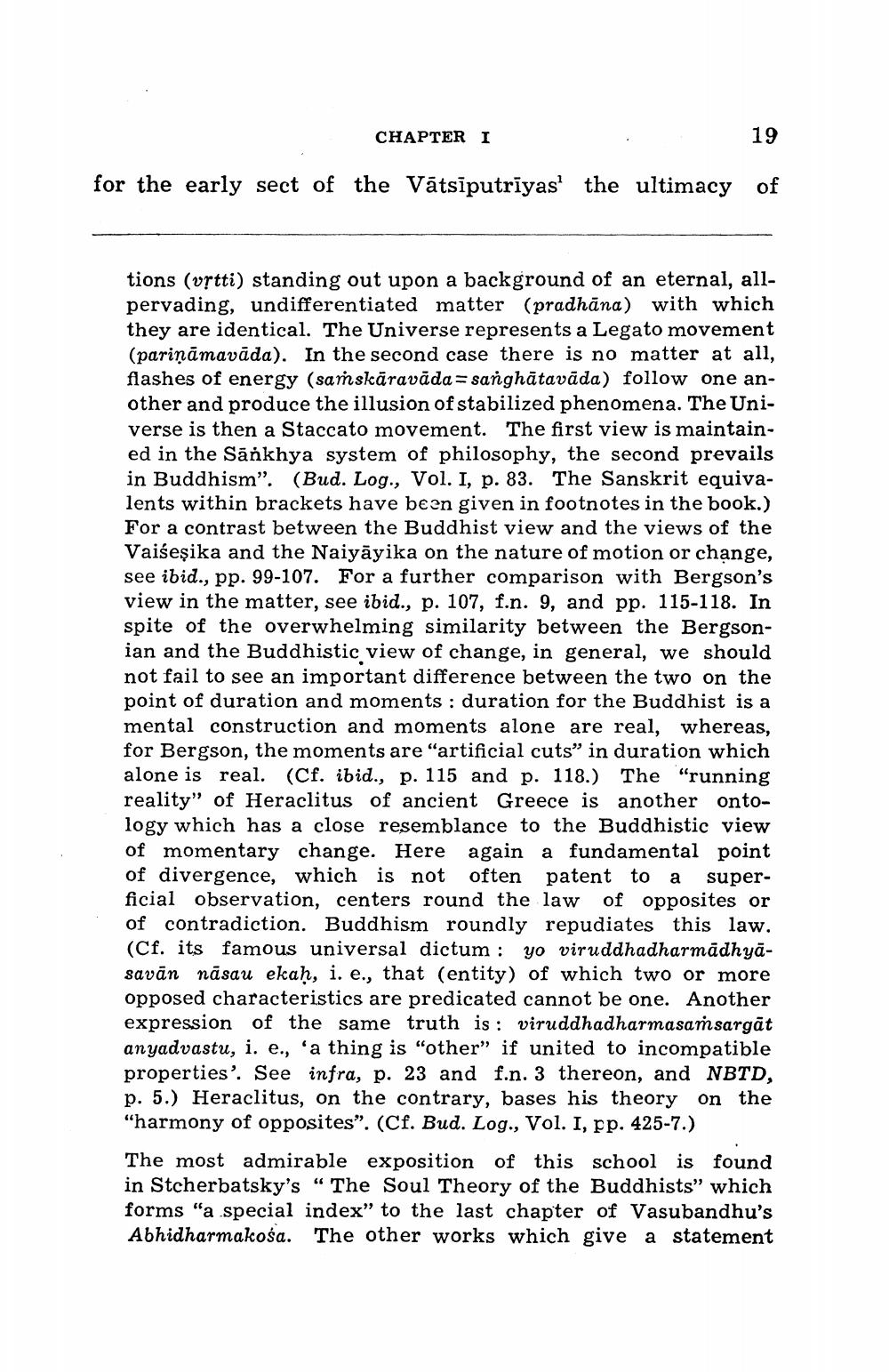________________
CHAPTERI
19
for the early sect of the Vātsīputrīyas' the ultimacy of
tions (vștti) standing out upon a background of an eternal, allpervading, undifferentiated matter (pradhāna) with which they are identical. The Universe represents a Legato movement (pariņāmavāda). In the second case there is no matter at all, flashes of energy (samskäravāda= sanghātavāda) follow one another and produce the illusion of stabilized phenomena. The Universe is then a Staccato movement. The first view is maintained in the Sankhya system of philosophy, the second prevails in Buddhism". (Bud. Log., Vol. I, p. 83. The Sanskrit equivalents within brackets have been given in footnotes in the book.) For a contrast between the Buddhist view and the views of the Vaiśeşika and the Naiyāyika on the nature of motion or change, see ibid., pp. 99-107. For a further comparison with Bergson's view in the matter, see ibid., p. 107, f.n. 9, and pp. 115-118. In spite of the overwhelming similarity between the Bergsonian and the Buddhistic view of change, in general, we should not fail to see an important difference between the two on the point of duration and moments : duration for the Buddhist is a mental construction and moments alone are real, whereas, for Bergson, the moments are "artificial cuts" in duration which alone is real. (Cf. ibid., p. 115 and p. 118.) The "running reality” of Heraclitus of ancient Greece is another ontology which has a close resemblance to the Buddhistic view of momentary change. Here again a fundamental point of divergence, which is not often patent to a superficial observation, centers round the law of opposites or of contradiction. Buddhism roundly repudiates this law, (Cf. its famous universal dictum : yo viruddhadharmādhyāsavān näsau ekaḥ, i. e., that (entity) of which two or more opposed characteristics are predicated cannot be one. Another expression of the same truth is : viruddhadharmasaṁsargāt anyadvastu, i. e., 'a thing is "other" if united to incompatible properties'. See infra, p. 23 and f.n. 3 thereon, and NBTD, p. 5.) Heraclitus, on the contrary, bases his theory on the "harmony of opposites". (Cf. Bud. Log., Vol. I, pp. 425-7.) The most admirable exposition of this school is found in Stcherbatsky's “The Soul Theory of the Buddhists" which forms "a special index" to the last chapter of Vasubandhu's Abhidharmakośa. The other works which give a statement




